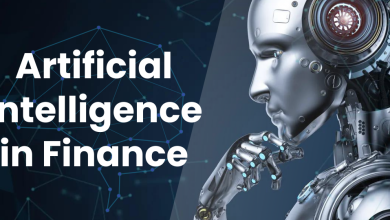
OCR has become so embedded in document management that it’s easy to think of it as unexceptional rather than revolutionary. But with the arrival of AI the reality is quite the opposite. Intelligent content automation expert Dr John Bates explains
OCR (optical character recognition) tools have long been highly useful to organisations who need to extract information from business documents and feed it into systems of record. But if you thought there was nothing more to look for from the technology, think again, as AI has enabled a breakthrough every bit as game-changing for OCR as the Monolith was for early humanity in 2001: A Space Odyssey
As exciting as today’s advances are, they’re really just the latest chapter in a long history of OCR usefulness. The technology’s roots reach back to the early 20th century, when the first machines translated characters into telegraph code. Soon after came the Optophone, a handheld device for the blind that converted printed text into sound.
With the rise of business computing, OCR became so ingrained in document management (DM) that it’s often regarded as routine. The reality, however, is quite different. New research with the Association for Intelligent Information Management (AIIM) reveals that OCR is now driving real digital transformation—expanding beyond its traditional role in invoice processing to front-office applications such as Know Your Customer, contract management, and HR workflows
According to the AIIM research, the conversation is shifting from OCR to IDP (intelligent document processing). While machine learning has been part of IDP for some time, the real game-changer is the advent of deep learning and large language models (LLMs). These technologies give extraction platforms the power to handle greater complexity—such as handwriting, poor-quality scans, and ambiguous document formats—making it possible to capture not just text, but meaning.
A new part of ECM
As a result, document understanding is becoming faster, more accurate, and contextually intelligent. Evidence for this comes from AIIM’s survey of 600 users across the US and Europe, all from enterprises with over $10M in revenue and more than 500 employees, spanning industries including healthcare, government, energy, finance, and manufacturing
The findings are striking: 78% already use AI via IDP solutions, often cloud-delivered by hyperscalers like Amazon or Microsoft. Strikingly, most (66%) of these new implementations involve replacing legacy systems, with new use cases spanning licenses, claims, onboarding, and medical records.
But as notably, paper still plays a big role, with 61% of even AI-powered IDP users saying it remains central to processes, and its importance may even grow.
A growing demand for future-proof, AI-agnostic IDP
What does this mean for the evolution of IDP? First, it’s important to note that many current solutions don’t yet reflect advanced AI-powered IDP. Legacy OCR and simple automation still dominate the landscape, leaving most organisations in the early stages of AI maturity.
But with 68% of new projects replacing existing systems, this probably won’t remain true for long. Frustration with first-gen solutions that are limited in flexibility, scalability, and accuracy is fueling demand for future-proof, AI-agnostic platforms that let CIOs and Information Managers better integrate AI into their document workflows without frequent rip-and-replace cycles.
Invoice processing remains a prime automation use case, but AI is proving that IDP can handle far more, in particular in customer-facing and compliance-heavy workflows requiring complex document analysis, unstructured data handling, and audit-ready records. For instance, a modern KYC process can parse ID cards, detect fraud, and archive results in compliance-ready formats—capabilities impossible or at least rather hard to do with legacy OCR systems.
Are we on the brink of truly intelligent content automation?
IDP is clearly evolving beyond niche use to become essential in enterprise operations, integrated with ERP, CRM, and other platforms. This shift signals the debut of an entirely new enterprise IT category: Intelligent Content Automation, where AI-powered document understanding converges with enterprise workflow automation.
I don’t think such intelligent content automation will come as a commodity service from the cloud hyperscalers. While large cloud providers play an increasingly important role by offering infrastructure and native document AI services, these services alone are not complete turnkey solutions. Business users need platforms that can orchestrate diverse services, integrate with internal systems, and build pipelines tailored to specific workflows, so there’s a need for specialists acting as integrators and orchestrators, combining cloud services with proprietary tools to deliver flexible IDP solutions.
Paper, however, remains stubbornly persistent. Even as a committed ECM advocate, this isn’t entirely surprising—its continued use often stems from regional habits, like the ongoing reliance on paper checks in the US, as well as regulatory requirements that mandate the retention of physical copies.
However, e-invoicing moves in Europe, including the UK, will gradually reduce reliance on paper. Over time, I expect paper to meet us halfway, becoming increasingly digitally enhanced with barcodes and metadata that enable more efficient processing.
Efficient; does that mean fewer people? Interestingly, only 167 of the 600 surveyed organisations cited headcount reduction as a primary driver of their IDP work. Most highlighted faster processing, improved ROI, and greater business agility, signaling a shift from cost-cutting to human empowerment.
The goal here, it seems, isn’t job elimination; it’s amplifying knowledge worker productivity, freeing them from mundane tasks to focus on higher-level decisions.
But, we must also be clear that we have a long way to go to get there. Despite all the advances this study reveals, automation levels are still modest; many organisations, even those with 56% of processes automated, still handle tens of thousands of documents manually.
Full or nearly full automation is technically possible, but the true value of IDP lies in designing systems that intelligently handle exceptions, escalating uncertain cases to human reviewers when necessary. Rather than replacing human roles, the focus should be on hybrid systems where automation manages the bulk of work, while humans handle the edge cases.
IDP promises transformation
IDP is no longer just about documents. Instead, it is the fusion of content, AI understanding, and workflow automation. As AI capabilities become more accessible and composable, organisations can integrate them across enterprise platforms like SAP, Salesforce, or Workday to create true end-to-end automation.
Soon, document workflows will evolve into intelligent business pipelines. So this isn’t just a renaissance for IDP; it’s a transformation. The time to engage is now—not because IDP is new, but because the technologies, integrations, and use cases have finally aligned to deliver enterprise-wide impact.
In more than a century, we’ve progressed from the 1913 Optophone to today’s intelligent document pipelines, but the journey of extracting business information from documents may only be getting started.
John Bates is CEO of SER Group, a Germany-headquartered global leader in ECM. The full AIIM Intelligent Document Processing (IDP) Survey 2025 can be accessed here.




